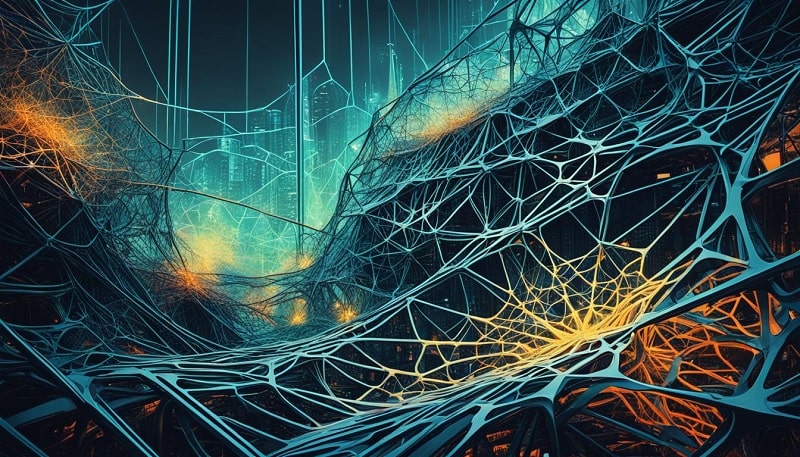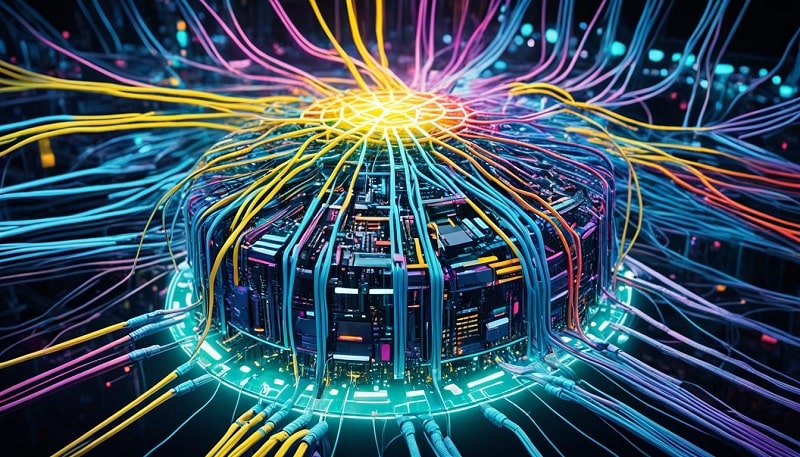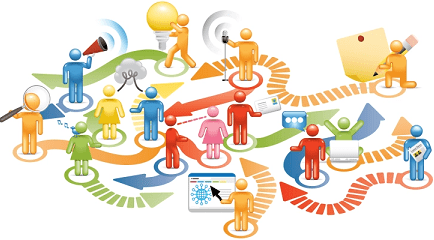
- Understanding the Foundation of Neural Networks
- Exploring Neural Network Architecture
- The Versatility of Neural Networks in Data Science
- Diving Deep into Deep Learning Models
- Neural Networks: Technologies Driving Advances in AI
- Practical Applications of Neural Networks across Industries
- Write a comment
As you delve into the world of artificial intelligence, one of the most buzz-worthy terms that you'll encounter is neural networks. This AI subset, which is a core part of deep learning, has become indispensable in making sense of the immense data generated in our digital era. Drawing inspiration from the intricate workings of the human brain, neural networks form the backbone of many innovations integral to machine learning and data science.
Understanding the Foundation of Neural Networks

At the core of the digital cognitive realm, neural network algorithms harness deep computational power to mirror the complexity of human thought. With the ascent of deep learning, these algorithms have refined their prowess, demonstrating exceptional machine perception capacities across a spectrum of data-intensive applications.
Neural networks are remarkable not only for their ability to learn from data but for their flexibility in adapting to various types of information. They accomplish this through a meticulously structured system of layers and nodes, each contributing to the network's overall intelligence. It's this structure that allows neural networks to process information in a way that's reminiscent of how humans interact with the world.
Understanding the depth and breadth of neural networks begins with a grasp of their ability to approximate virtually any function, linking input variables to outputs with a precision that, at times, feels bordering the uncanny. This universal approximator theorem is not simply a mathematical curiosity but a testament to the adaptability and scope of neural networks in quantitative reasoning.
Key components of neural networks that enable this advanced form of artificial intelligence:
- Input Layer: The first stop for data entering the network, where raw information is gathered before analysis.
- Hidden Layers: The critical 'processing units' of a network where intricate patterns are detected and leaned through connections. These layers can be numerous, each finding different abstractions and correlations within the data.
- Output Layer: The final layer where the network produces a result, based on the learning it has synthesized through its hidden layers.
These layers are interconnected by a plethora of weighted pathways, each adjusting through the learning process to minimize errors and optimize the network's predictions - a process analogous to the synaptic strengthening and weakening that occurs in biological neural networks.
| Layer | Function | Significance in Neural Networks |
|---|---|---|
| Input | Receives data for processing | Acts as the interface between the real world and the model's perception |
| Hidden | Extracts and processes features | Finds and amplifies relevant patterns in the data |
| Output | Yields the end result | Translates the model's findings into understandable outcomes |
To truly harness the capabilities of neural networks, one must understand that they are more than just static models; they are dynamic systems capable of learning and evolving as they ingest new data, constantly finetuning their algorithms to yield increasingly precise outcomes. It is this perpetual cycle of input, processing, and output that positions neural networks as the bedrock upon which modern machine perception stands.
Exploring Neural Network Architecture
As you delve into the world of artificial intelligence, you'll likely encounter the term 'neural network architecture.' This integral framework is the backbone of machine learning, providing a structured approach to problem-solving in computational contexts.
Perceptron: The Building Block of Neural Networks
The perceptron is crucial as the fundamental unit of a neural network architecture. It functions akin to biological neurons, accepting inputs, and generating an output after processing through an activation function. Perceptrons are the linchpins in more complex multi-layer neural network systems, paving the way for intricate computations.
The Role of Layers: Input, Hidden, and Output
A typical artificial neural network comprises various layers, each playing a distinct role in data processing. The input layer is the starting point that receives raw data. The hidden layers - which can be single or multiple in a multi-layer neural network - focus on extracting and refining features from this input.
At the heart of these hidden layers lies the ability to discover intricate patterns crucial for the decision-making process. Lastly, the output layer assimilates the insights from the hidden layers to offer a conclusion or prediction.
Importance of Activation Functions
Activation functions are vital in neural network architecture, adding a layer of complexity and enabling the network to solve non-linear problems efficiently. The ReLU activation function, known for its computational simplicity, is widely used across various hidden layers.
Meanwhile, the Sigmoid activation function often finds its place in the output layer for binary classification tasks, helping predict probabilities as output.
Weights, Biases, and the Transfer Function
Weights and biases are the adjustable parameters of a neural network. The weight matrix scales the input data, while biases allow the activation function to be shifted to the left or right, which can be crucial for learning. Both these aspects work in conjunction with the transfer function, which consolidates the inputs, weights, and biases to generate an output value that feeds into the activation function.
This sophisticated interplay of components ensures that an artificial neural network can tweak its internal parameters to minimize error and improve accuracy over time.
| Component | Role | Impact on Learning |
|---|---|---|
| Input Layer | Receives initial data | Sets the foundation for subsequent layers to process |
| Hidden Layers | Feature extraction and transformation | Uncovers complex patterns and relationships |
| Output Layer | Yields final prediction or classification | Reflects the decision-making based on refined data |
| Activation Functions | Introduces non-linearity | Enables network to handle nonlinear problems |
| Weights & Biases | Adjusts the strength of the inputs and activation thresholds | Optimizes network performance through the learning process |
The Versatility of Neural Networks in Data Science

In computer vision, neural networks excel in the recognition and interpretation of visual data. They are instrumental in the identification of objects and gestures with fine accuracy, which are crucial components for innovations in autonomous vehicles, surveillance systems, and interactive technologies.
Natural language processing has also been dramatically enhanced by neural networks. They enable machines to perform complex tasks such as speech recognition and sentiment analysis, which are foundational for developing responsive AI assistants and for managing large volumes of unstructured text data effectively.
When it comes to predictive analytics, neural networks are unparalleled in their ability to forecast future trends and events. They analyze and learn from historical data to make predictions, which are essential in fields such as healthcare for predicting patient outcomes and in retail for understanding consumer behavior patterns.
| Field | Application | Impact |
|---|---|---|
| Computer Vision | Object recognition, gesture recognition | Improved automation, enhanced safety features |
| Natural Language Processing | Speech-to-text, sentiment analysis | More intuitive user interfaces, better data insights |
| Predictive Analytics | Market trends, patient diagnostics | Augmented decision making, customized healthcare plans |
Neural networks are thus playing a pivotal role in spearheading the future of data science, driving both academic inquiry and industrial innovation to new horizons. Your understanding of their versatile applications is crucial in harnessing their full potential.
The realm of data science has been profoundly transformed by the integration of neural networks, particularly in the disciplines of computer vision, natural language processing, and predictive analytics.
These fields have witnessed significant advancements thanks to the robust, adaptive nature of neural network algorithms.
Diving Deep into Deep Learning Models

Convolutional Neural Networks (CNNs) for Image Recognition
Convolutional Neural Networks (CNNs) have set the standard for image recognition. Their unique structure, designed to emulate the intricacies of the human eye and brain, allows for a robust and dynamic approach to computer vision.
CNNs analyze visual input through layered hierarchies, extracting features with increasing levels of complexity to achieve unparalleled accuracy in image classification and object detection tasks.
Recurrent Neural Networks (RNNs) for Sequential Data
Recurrent Neural Networks (RNNs) have revolutionized the processing of sequential data. These networks come equipped with internal loops that feed back the information, making it possible to maintain context and manage time-dependent data effectively.
RNN's remarkable memory capabilities have made significant contributions to the domain of natural language processing, enabling sophisticated time series analysis and predictive modeling.
The Breakthrough of Generative Adversarial Networks (GANs)
Generative Adversarial Networks (GANs) are a class of AI that embody the concept of duality - the generator and discriminator engage in a productive rivalry. As the generator creates data, the discriminator evaluates it, a process that refines both parties. This innovative confrontation leads to the production of astonishingly authentic synthetic images, opening new possibilities for creative AI applications.
Transformers: Revolutionizing Natural Language Processing
Transformers are pivotal in modern natural language processing, offering a profound shift from traditional sequential data processing to a model that harnesses parallelization.
This evolution facilitates the analysis of larger contexts within text data, immensely improving the accuracy of machine translation, content generation, and comprehensive language models, such as GPT and BERT.
| Model | Primary Use Case | Key Characteristic |
|---|---|---|
| CNN | Image recognition | Layered hierarchical processing |
| RNN | Sequential data handling | Internal memory loops |
| GAN | Realistic synthetic data creation | Generative vs. discriminative contest |
| Transformers | Natural language understanding | Parallel data processing |
As we continue to delve into these models, understand that their applications in AI are numerous and transformative. The convolutional neural networks, recurrent neural networks, generative adversarial networks, and transformers represent only a fraction of what's possible as we continue to push the horizon of machine intelligence.
Neural Networks: Technologies Driving Advances in AI

By utilizing expansive datasets, neural networks have the capability to learn, adapt, and improve over time. This ability is transforming industries by enhancing both the efficiency and effectiveness of various artificial intelligence implementations.
From speech recognition systems that allow for hands-free interactions with technology to predictive analytics improving decision-making processes, neural networks enable a range of innovative applications.
Key areas where these advancements are making significant impacts:
- Automated image recognition is now more accurate than ever, thanks in large part to the sophisticated algorithms of Convolutional Neural Networks (CNNs).
- Recurrent Neural Networks (RNNs) have greatly improved voice-controlled assistance and language translation software, by understanding and predicting speech patterns.
- Neural networks contribute to the field of robotics, allowing machines to learn from their environment and carry out complex tasks with greater autonomy.
- In the realm of finance, algorithms informed by neural networks are being used to predict stock movements and analyze market trends.
The application of neural networks is not confined to these examples; their flexibility and scalability mean they can be applied to almost any area where data is available. As data continues to grow exponentially, the role of neural networks in harnessing and interpreting this information will be invaluable to the continued evolution of machine learning and artificial intelligence.
One of the reasons for the success of neural networks is their structure, which can be customized and configured to suit the unique needs of various data forms and requirements. Such tailor-made networks are not only powerful in processing large volumes of information but also in generating precise and actionable insights that drive AI progression.
Practical Applications of Neural Networks across Industries
From the streams of data flowing through healthcare systems to the intricate patterns influencing financial markets, the power of neural networks is being harnessed to foster innovation, efficiency, and personalization.
Enhancing Computer Vision in Healthcare and Security
In healthcare, the implementation of neural networks in computer vision is instrumental in revolutionizing diagnostic procedures. By analyzing complex medical imaging with unprecedented accuracy, neural networks contribute to earlier and more accurate diagnoses, potentially saving lives.
Similarly, in the realm of security, these sophisticated AI systems improve surveillance capabilities, bolstering threat detection and providing a safer environment for public and private entities alike.
Automation and Prediction in Finance with Neural Networks
Your finance-related ventures stand to benefit remarkably from the predictive analytics and automation capabilities facilitated by neural networks. They adeptly assess risks, detect fraudulent activities, and intuit market trends, effectively transforming data into actionable financial insights.
As a result, the efficiency of financial decisions and operations is significantly multiplied, equipping businesses to navigate the complexities of economic ecosystems.
Neural Networks Revolutionizing Natural Language Understanding
The advancement of natural language understanding, propelled by neural networks, is rapidly breaking down the barriers between human communication and machine interpretation.
AI-driven chatbots and digital assistants are becoming increasingly proficient in decoding and responding to human speech, exemplifying the powerful applications of neural networks in constructing seamless interactions and fostering customer engagement.
Personalizing User Experience Through Recommendation Systems
Neural networks also excel in cultivating a personalized user experience through precision-tuned recommendation systems. By predicting and aligning with individual preferences, these systems adeptly curate content, products, and services, enhancing engagement and satisfaction across a range of digital platforms. For businesses, this means strengthened customer relationships, and for users, an effortlessly customized digital experience.
What is your opinion on the importance of neural networks in understanding and processing the vast amount of data generated in the digital era?








